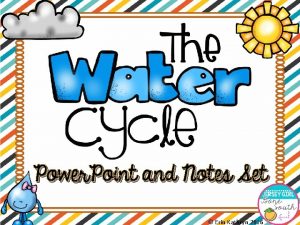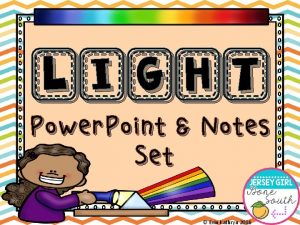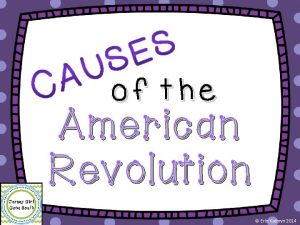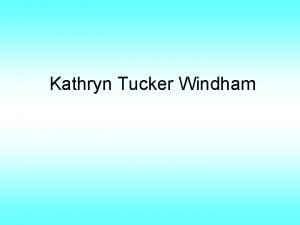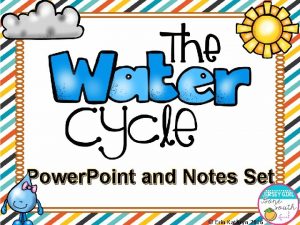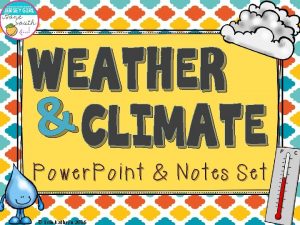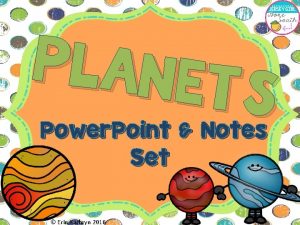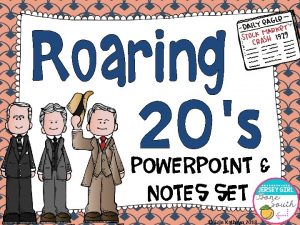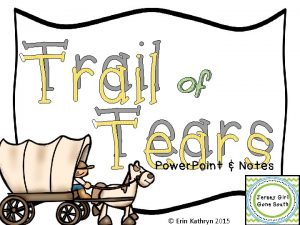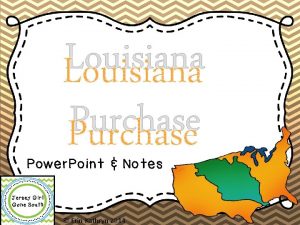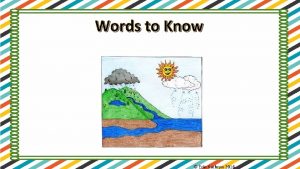Power Point and Notes Set Erin Kathryn 2016

















- Slides: 17

Power. Point and Notes Set © Erin Kathryn 2016

Three States of Water • Water is found in three forms, or states, on Earth - solid, liquid, and gas • Ice is water in its solid state • Ice forms when liquid water hits the freezing point of 32°F or 0°C. • When heat is added to ice, it melts and changes to liquid water. • Water in gas form is called water vapor. • Water vapor forms when heat is added to liquid water to a temperature of 212°F or 100°C. © Erin Kathryn 2016

The Water Cycle • The water cycle is the movement of water into the air as water vapor and back to Earth’s surface as precipitation. • The water on Earth is constantly changing from one form to another in a continuous cycle that occurs over and over again. © Erin Kathryn 2016

• Evaporation is the change of state from a liquid to a gas (water vapor). • Evaporation occurs when heat is added to a liquid. • Water vapor is in the air, but you cannot see it. • In the water cycle, heat is added to water (lakes, oceans, rivers, streams) from the sun. © Erin Kathryn 2016

• After the water evaporates, the water vapor is cooled by the air and condenses. • Condensation happens when gas changes to a liquid. • The tiny drops of water combine together to form clouds. © Erin Kathryn 2016

• When the water droplets in clouds get heavy, they fall back to Earth as precipitation. • Precipitation is any form of water that falls from clouds to Earth. • Rain, snow, sleet, and hail are all forms of precipitation. © Erin Kathryn 2016

Types of Precipitation rain • snow sleet hail • • • Most common form of precipitation When drops of water fall through air that is above freezing Falls when the temperature in a cloud is below freezing Water vapor forms ice crystals called snowflakes • Rain that freezes as it falls to Earth • Forms when drops of rain freeze and strong winds carry them higher into a cloud © Erin Kathryn 2016

• Collection occurs when the precipitation falls to Earth and collects in lakes, oceans, rivers, and streams. • This allows for the water cycle to begin all over again with evaporation. © Erin Kathryn 2016

• When precipitation occurs, not all water makes it back to oceans, lakes, streams, and rivers. • Some water soaks into the Earth. • This process is called infiltration. © Erin Kathryn 2016

• Some precipitation flows downhill on Earth’s surface. • This water is called runoff. • Runoff water flows toward streams, rivers, lakes, and oceans. © Erin Kathryn 2016

The Water Cycle PRECIPITATION CONDENSATION EVAPORATION RUNOFF COLLECTION © Erin Kathryn 2016

Why It Matters… • All living things need water to survive. • The water cycle allows water to be recycled over and over again. • By going through the different forms of water, it allows for us to always have water as a natural resource on Earth. © Erin Kathryn 2016

Reflection • Explain what the water cycle is. • Does the water cycle have a start and stopping point? • Why is the water cycle important? • Draw and label the water cycle. © Erin Kathryn 2016

Reflection • Explain what the water cycle is. • The water cycle is the process of water changing from one form to another over and over again. • The recycling of water on Earth. © Erin Kathryn 2016

Reflection • Does the water cycle have a start and stopping point? • No, the water cycle is a cycle that continues over and over again. • Some might say that it starts with evaporation, but all the steps of the cycle rely on one another. © Erin Kathryn 2016

Reflection • Why is the water cycle important? • The water cycle is important because all living things need water to survive. The water cycle ensures that water can be reused over and over. © Erin Kathryn 2016

Reflection • Draw and label the water cycle. precipitation condensation evaporation runoff infiltration collection © Erin Kathryn 2016
 Erin kathryn
Erin kathryn Erin kathryn 2016
Erin kathryn 2016 Erin kathryn 2017
Erin kathryn 2017 Erin kathryn 2014
Erin kathryn 2014 Total set awareness set consideration set
Total set awareness set consideration set Training set validation set test set
Training set validation set test set Power trianlge
Power trianlge Power bi power point
Power bi power point Point point power
Point point power What is the overlap of data set 1 and data set 2?
What is the overlap of data set 1 and data set 2? Set off and carry forward of losses notes
Set off and carry forward of losses notes Kathryn dao
Kathryn dao Kathryn coleman cms
Kathryn coleman cms Capacoo
Capacoo Ttp diagnostic criteria
Ttp diagnostic criteria Ma pal tasks
Ma pal tasks Callan windham
Callan windham Kathryn e. barnard metaparadigmas
Kathryn e. barnard metaparadigmas
